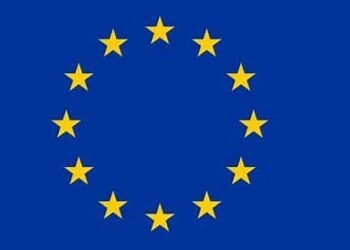A low point for Ghana as the World Bank ranks Ghana the eighth country with the highest food inflation globally, which highlights the extent to which the average Ghanaian grapples with the persistent rise in food prices in the country.
According to the latest Food Security Report by the World Bank Ghana, the West African nation secured the eighth position in terms of its Nominal Food Inflation, which stood at an astounding 54% on a year-on-year basis. Meanwhile, its Real Food Inflation, recorded at 12% year-on-year, positioned it at ninth place in the global rankings.
Venezuela emerged at the forefront of the Nominal Food Inflation category with an alarming year-on-year inflation rate of 414%, followed closely by Lebanon (280%), Zimbabwe (256%), Argentina (117%), Suriname (71%), Egypt (66%), and Sierra Leone (58%), clinching the second through seventh positions respectively.
In the realm of Real Food Inflation, Zimbabwe (80%), Egypt (30%), Lebanon (26%), Turkey (16%), Rwanda (15%), Burundi (14%), Lao (14%), and Sierra Leone (13%) took the lead, representing the countries with the highest food inflation rates.
The report, which encompassed data between February 2023 and May 2023, underscored the prevalence of elevated inflation across low and middle-income nations. Over 63.2% of low-income countries, 79.5% of lower-middle-income countries, and 67.0% of upper-middle-income countries experienced inflation exceeding 5%. Moreover, even a substantial 78.9% of high-income countries grappled with elevated food price inflation.
The report highlighted that regions including Africa, North America, Latin America, South Asia, Europe, and Central Asia have borne the brunt of these inflationary pressures. Of note, food price inflation surpassed overall inflation rates in over 80.1% of the 166 nations where both food CPI and overall CPI indexes are accessible.
A closer look at commodity prices reveals the increase in maize and wheat prices by 12% and 14% respectively, after an initial dip in the first half of July 2023. Consequently, the cereal price index experienced an upswing, while rice prices remained steady.
In a year-on-year context, maize and wheat prices reported a decline of 15% and 17% respectively, while rice prices marked a contrasting 16% surge. As of now, maize, wheat, and rice prices stand 8%, 11%, and 3% higher than in January 2021.
2023 State of Food Insecurity and Nutrition
The 2023 State of Food Insecurity and Nutrition in the World report delves into the global landscape of hunger, food insecurity, and the intricate dynamics posed by urbanization within agrifood systems. Expressing concern, the report also addresses Russia’s exit from the Black Sea Grain Initiative (BSGI) in the global market, signaling potential shifts in the grain trade landscape.
Ghana’s economy entered a full-blown crisis in 2022, after having rebounded from the COVID-19 slowdown in 2021. In response to the macroeconomic challenges, the authorities enacted some fiscal adjustment in 2022 but fell short of their consolidation targets; the 2023Q1 fiscal deficit (cash) was within target. Expenditure consolidation and revenue mobilization continued to be hampered by structural constraints.
To address these unsustainable domestic and external imbalances, the authorities embarked on a comprehensive debt restructuring operation. Against the backdrop, growth is projected to decelerate further in 2023-24, before picking up in the medium-term. The government has embarked on an ambitious fiscal consolidation plan: however, delivering on it will require addressing long-standing revenue mobilization and budget control weaknesses. However, the measures couldn’t stem the impact of the crisis on food inflation and the average Ghanaian struggles to afford the ever increasing food costs.
As such, support for food self-sufficiency is needed in Ghana (a goal for many countries now due to the global food crisis), while opening the country to generate more export revenues. The Ghana Tree Crops Diversification Project can serve as a critical puzzle piece of the country’s current challenges. The project will support poverty alleviation while setting the country up to generate more foreign revenues in the medium to long-term.
READ ALSO: GSE-CI Takes a Dip Amidst Market Challenges



















